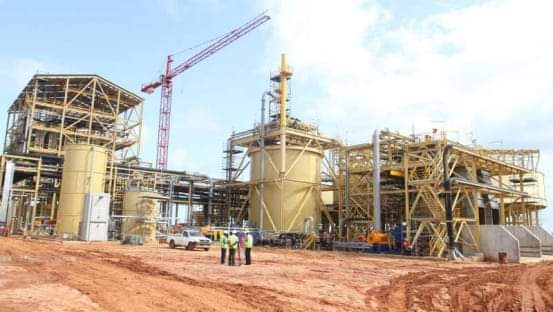By Reporter
Professor Hamadi Idi Boga has warned that poor post-mining land use planning can have significant environmental, social, and economic consequences for the communities.
In a long professional and detailed information to the public professor Boga said that some of the risks associated with inadequate or ineffective post-mining land use planning include soil degradation, possible water contamination, habitat destruction, land Instability, negative social impacts as well as legal and financial liabilities.
Boga a professional in biology, agricultural science, sequencing, microbiology, molecular biological techniques and RNA genes in his first write up painted a picture of 6000 acres of rehabilitated land at Nguluku and Maumba that require sober and proper planning to create wealth to the society.
“Overall, the risks of poor post-mining land use planning underscore the importance of proactive and responsible land rehabilitation practices. Effective planning and implementation of post-mining land use strategies are essential to mitigate these risks and ensure sustainable land use for future generations,” he said.
The PhD in Biology from Universität Konstanz said that there are examples to showcase the importance of careful planning, monitoring, and remediation in mining land use projects to prevent or mitigate negative impacts on the environment and local communities.
Boga said that Kwale people want careful planning, community engagement, and commitment to sustainable practices, post-mining land use projects to successfully rehabilitate former mining sites, restore ecosystems, and create new opportunities for economic and social development.
The theme of his write up “Creating Wealth from rehabilitation of the Kwale Mineral Sands Mine: Ideas for Post Mining Land Use” professor Boga emphasizes the need of community involvement in all the processes.
The Base Titanium mineral sands mining project in Kwale, Kenya, was one of the largest mineral sands deposits in Africa.
Base Titanium Limited is a subsidiary of Base Resources Limited, an Australian company that started operations in Kenya in 2013.
The project involves the extraction of minerals such as ilmenite, rutile, and zircon from the Kwale mineral sands deposits located in the coastal region of Kenya where over 1400 people were directly and indirectly employed by 2021.
“Base Titanium Mining project has provided various community benefits in the Kwale region which includes social investment programs, Community development projects, Environmental conservation and Economic development,” added Boga.
He said that Kwale people have a right to a robust informed engagement around the closure and planning of the Base Titanium Limited Mining site.
Boga said that the role to constitute post mining land use is vested upon the national land commission and county government and not the office of the mining cabinet secretary.
“The team and approach proposed by the former CS for Mining Salim Mvurya would not deliver that in my view. The role of the Ministry of Mining is to issue Mining Licenses and Mineral rights. Land Use Planning is the responsibility of the County Government and the National Land Commission. Base Titanium has informed the Ministry of Mining that the ore is about to be exhausted, hence
The CS for Mining should just have informed the County Government and the NLC that they should start the process of PMLU planning and prepare to take over the land for further action as guided by relevant laws,” he added.


